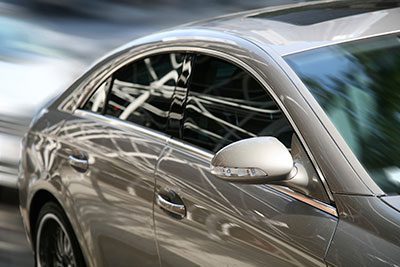
Auto Insurance – Vehicle Theft Prevention

The “Layered Approach” to Protection
Professional thieves can steal any car, but make them work for yours. To prevent thefts, the National Insurance Crime Bureau (NICB) recommends “Layered Protection.” The more layers of protection on your vehicle, the more difficult it is to steal.
The number of layers your vehicle needs varies depending on your vehicle and geographic location. Your budget and personal preferences should determine which anti-theft device is best for you.
Layer #1 — Common Sense
An unlocked vehicle with a key in the ignition is an open invitation to any thief, regardless of which anti-theft device you use. The common sense approach to protection is the simplest and most cost-effective way to thwart would-be thieves.
You should always secure your vehicle, even if parking for brief periods by:
- Removing your keys from the ignition
- Locking your doors
- Closing all your windows
- Parking in a well-lit area
Layer #2 — Warning Device
The second layer of protection is a visible or audible device that alerts thieves that your vehicle is protected. Popular second layer devices include:
- Audible alarms
- Steering wheel locks
- Steering column collars
- Brake locks
- Wheel locks
- Theft deterrent decals
- Identification markers in or on vehicle
- Window etching
- Laminated glass
Layer #3 — Immobilizing Device
The third layer of protection is a device that prevents thieves from bypassing your ignition and hot-wiring the vehicle.
Some electronic devices have computer chips in ignition keys. Other devices inhibit the flow of electricity or fuel to the engine until a hidden switch or button is activated.
Popular third layer devices include:
- Smart keys
- High security locks & keys
- Fuse cut-offs
- Kill switches
- Starter, ignition and fuel disablement
Layer #4 — Tracking Device
The final layer of protection is a tracking device that emits a signal to a police or monitoring station when the vehicle is reported stolen. Tracking devices are very effective in helping authorities recover stolen vehicles.
Passive and Active Anti-Theft Systems
Passive and active anti-theft devices are the two options available when considering an anti-theft system. Passive devices automatically arm themselves when the vehicle is turned off, the ignition key removed, or a door is shut. No additional action is required. Active devices require some independent physical action before they are set, such as pushing a button, or placing a “lock” over a vehicle component part. This physical action must be repeated every time the anti-theft device is set or it will not function.
(Source: National Insurance Crime Bureau)
Categories: Blog
